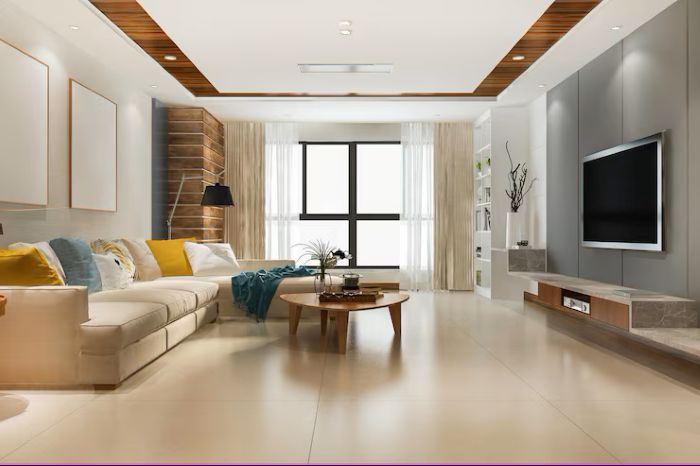In the world of interior design, it’s often the subtle touches that make the biggest impact. While furniture and color schemes are the obvious choices for revamping a room, two often overlooked elements—false ceilings and wall cladding—can dramatically transform a space from mundane to magnificent. These architectural features not only elevate the aesthetics of a room but also enhance functionality, mood, and ambiance.
False Ceilings: Elevate the Room—Literally and Figuratively
False ceilings, also known as dropped or suspended ceilings, have become a staple in modern interior design. Originally used to hide wiring, pipes, and ductwork, these ceilings now offer much more than just concealment.
1. Aesthetic Elegance
False ceilings allow for creative lighting solutions. From recessed lights to LED strips and cove lighting, they create a layered lighting effect that enhances depth and texture. Geometric patterns, curves, and layered designs bring drama and sophistication to the simplest of rooms, whether it’s a living area, bedroom, or office.
2. Acoustic & Thermal Comfort
Beyond beauty, false ceilings improve acoustics by absorbing sound and minimizing echo—a huge benefit for home theaters, conference rooms, and study spaces. They also help with insulation, keeping rooms cooler in summer and warmer in winter by reducing heat exchange.
3. Material Versatility
Gypsum, POP (Plaster of Paris), PVC, and wood are popular materials for false ceilings. Each offers unique benefits. For example, gypsum is lightweight and fire-resistant, while wooden ceilings add warmth and a touch of natural elegance.
Wall Cladding: More Than Just a Surface
Wall cladding involves covering a wall with another material to create a decorative surface. It adds texture, dimension, and personality to walls that might otherwise feel flat or dull.
1. Create a Focal Point
Stone, wood, 3D panels, or even metallic finishes can turn a bland wall into a striking focal point. Accent walls with decorative cladding serve as instant attention-grabbers in living rooms, lobbies, and bedrooms. For instance, a rustic stone-clad wall behind a modern TV unit adds both contrast and character.
2. Durability & Protection
Cladding protects the underlying structure from moisture, dust, and temperature variations. It’s a great solution for areas prone to wear and tear, such as hallways, staircases, and exteriors. Materials like vinyl, HPL (High-Pressure Laminate), or tiles are not only durable but also easy to maintain.
3. Natural & Textural Appeal
Wood cladding offers warmth and a cozy ambiance, while brick or concrete finishes introduce an industrial edge. 3D wall panels or fabric cladding create a tactile experience, adding both visual and sensory appeal to a space.
The Perfect Pairing: Designing with Intention
When false ceilings and wall cladding are used together thoughtfully, the results can be breathtaking. Imagine a living room with a layered ceiling featuring soft cove lighting that complements a stone-textured accent wall. Or a bedroom where a wooden-clad headboard wall continues seamlessly onto the ceiling, creating a cocoon-like feel.
The key lies in coordination—materials, colors, and textures should complement each other rather than compete. Neutral tones with bold accents, natural materials juxtaposed with modern lighting, or a minimalist ceiling paired with a dramatic wall treatment can strike the perfect balance.
Final Thoughts
False ceilings and wall cladding are more than just decorative elements—they are transformative tools that elevate everyday spaces into works of art. With thoughtful design, quality materials, and a touch of creativity, you can redefine the way a space feels and functions. Whether you’re renovating your home or designing a new one, consider these architectural features to create an environment that reflects your personality and stands the test of time.





